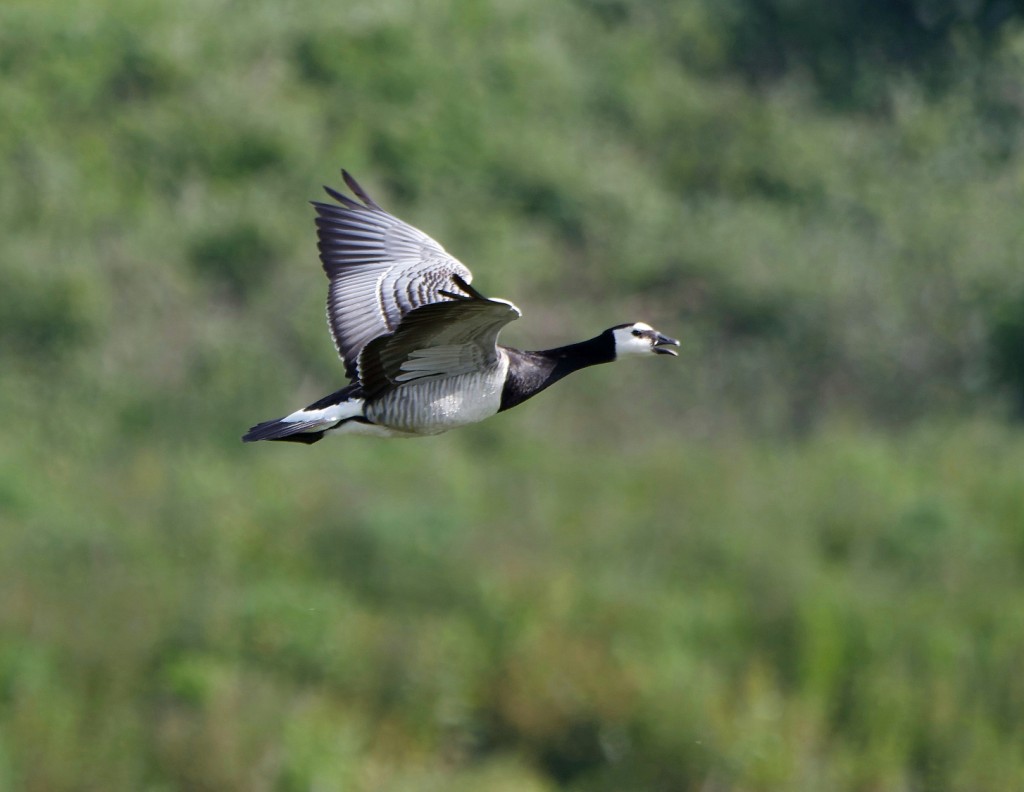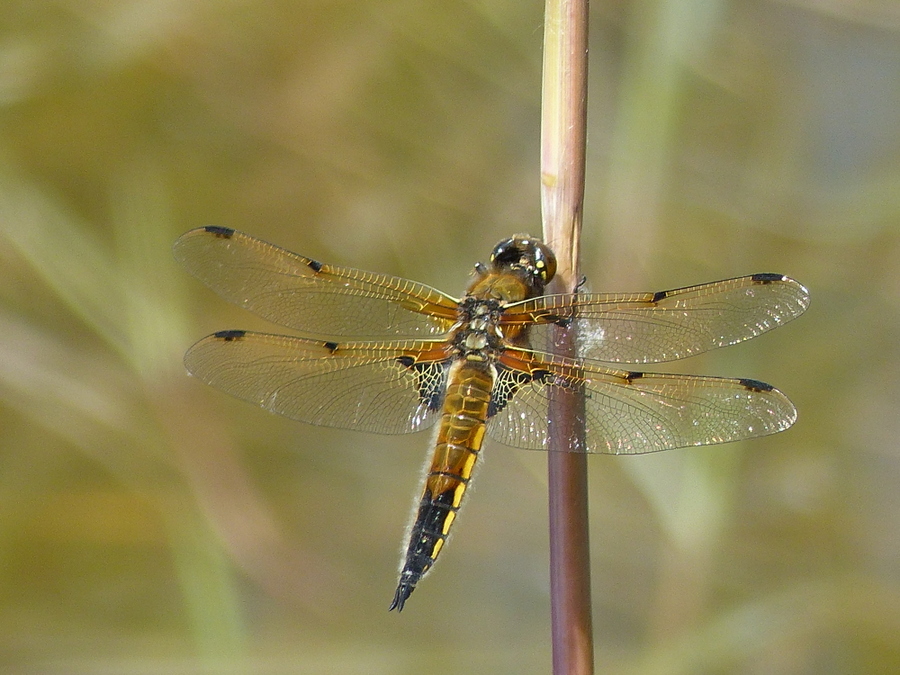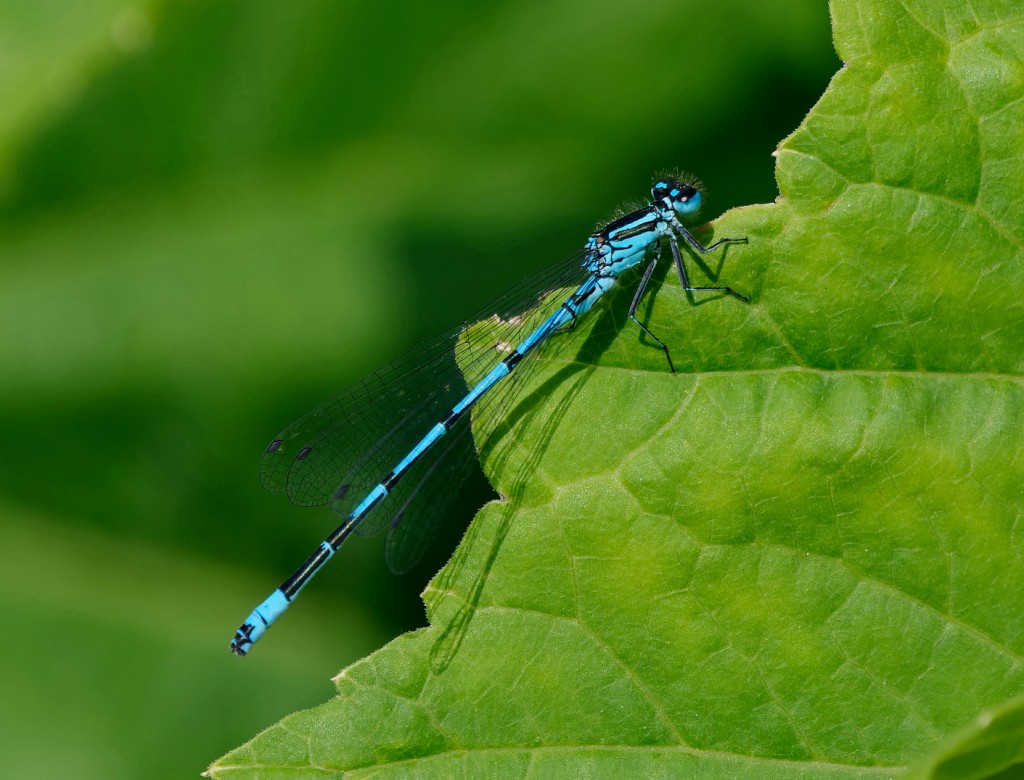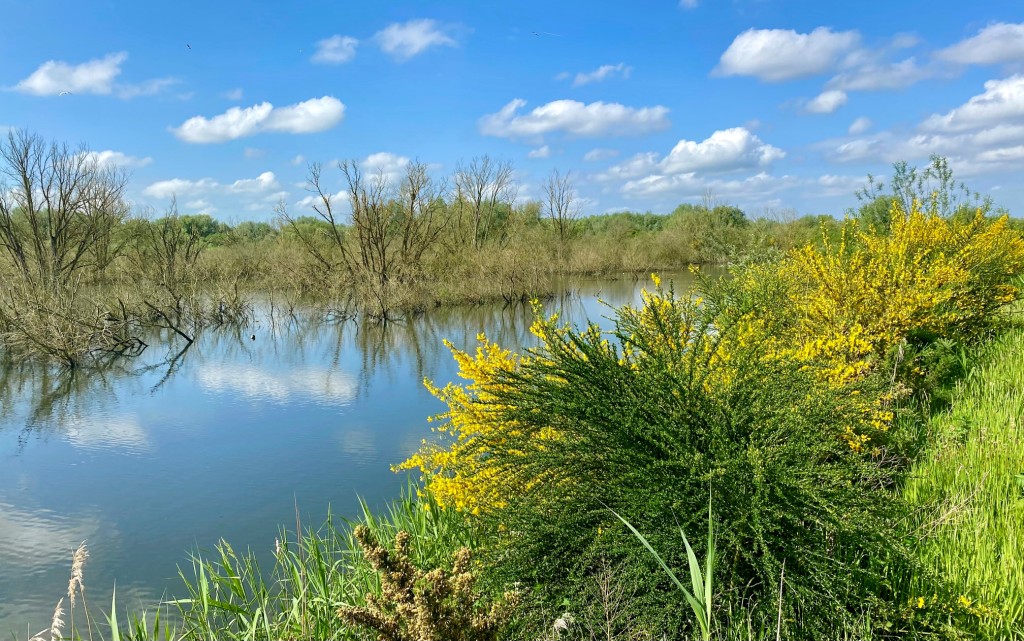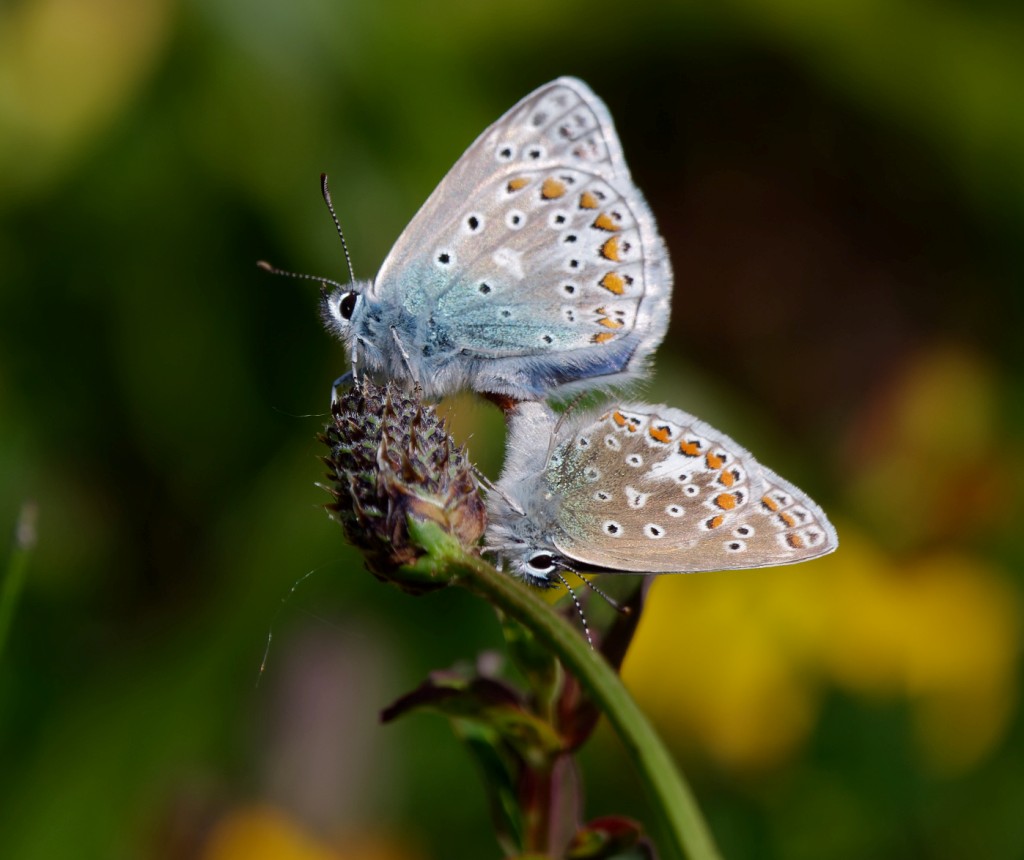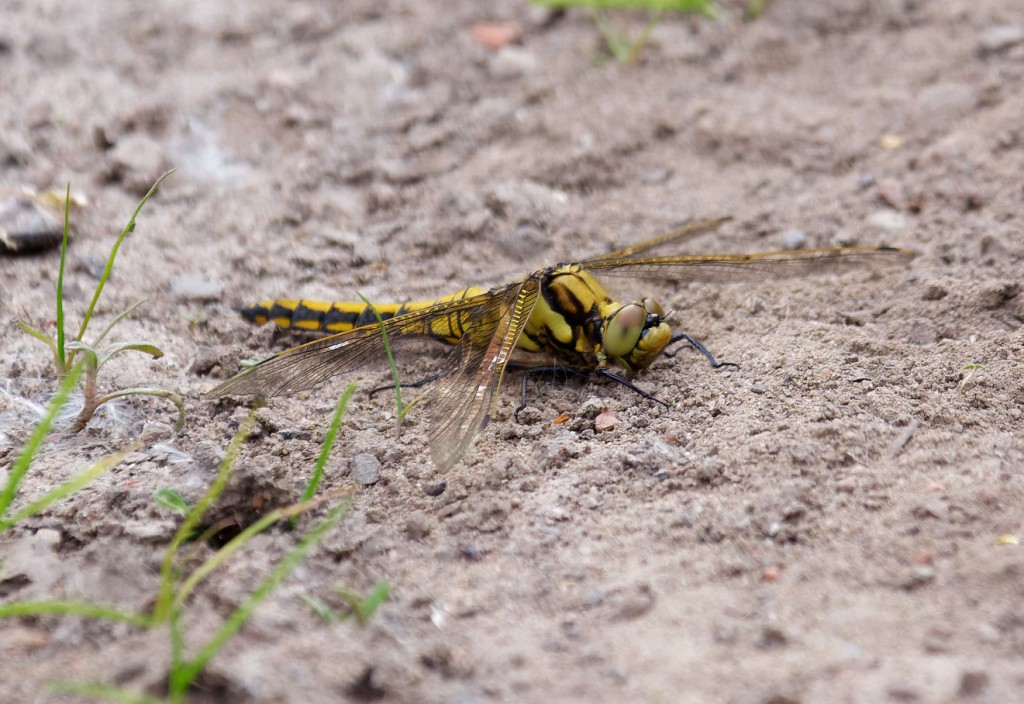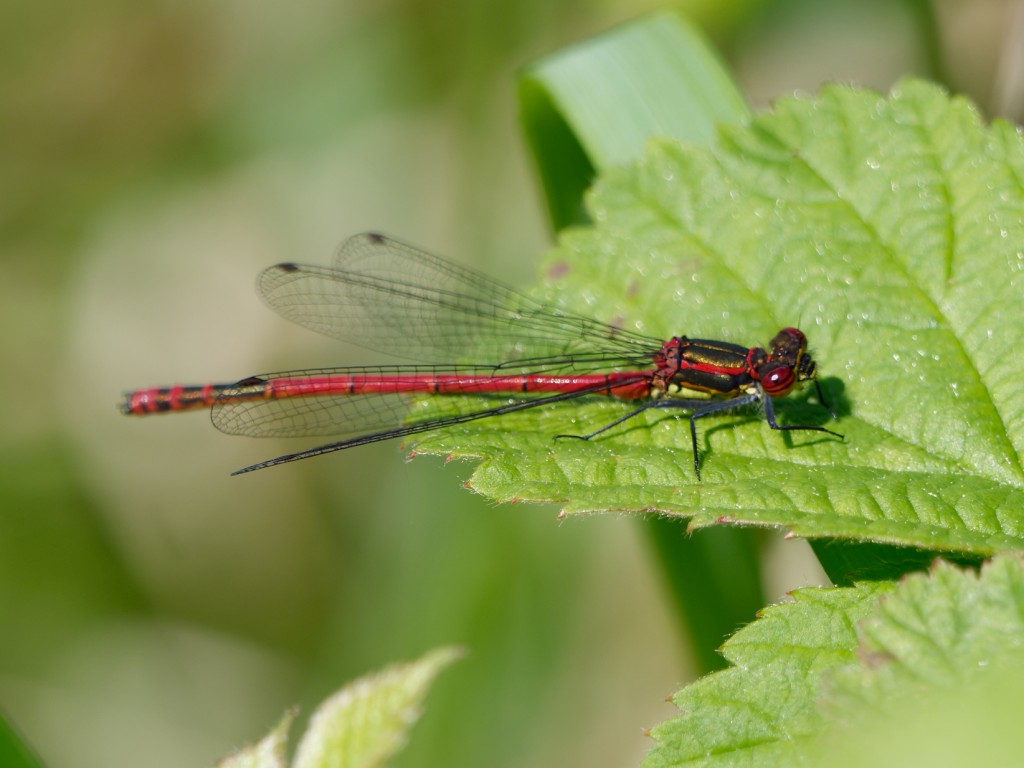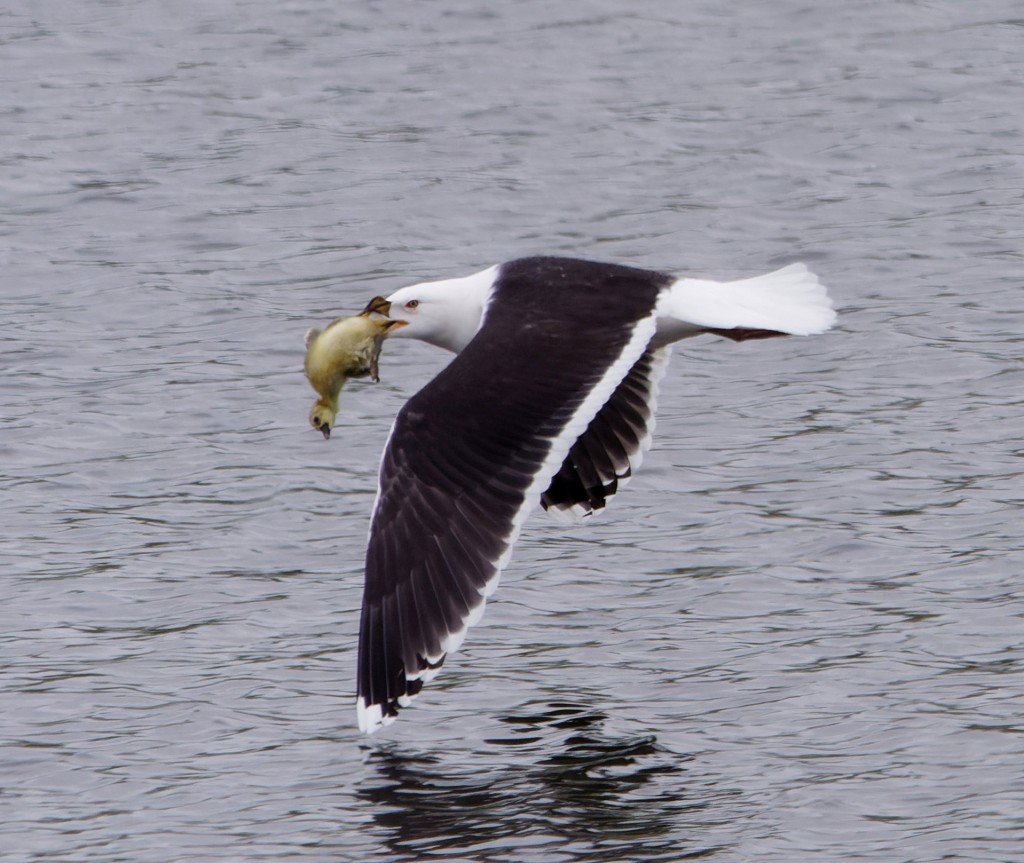Woolston Eyes Monthly Sightings
2023-05-30
Another lovely late spring morning, mainly spent on No.4 bed, reviewing the habitat management work we are planning for the coming months, with our RSPB wardens, Lizzie Hill and John Ball, along with Graham Jones and Becky Longden from Burton Wetlands RSPB Reserve. Before that, we did some counts on the bed, with highlights of: 7 Black-tailed Godwits which dropped in to feed, 205 Gadwall, which start arriving to moult at this time of year before building up to as many as 1,000 over the next month or so and around 100 Swifts feeding over the wetland. These latter are almost certainly from the local Westy breeding population, as they arrive daily to take advantage of the incredible volume of flying insects rising from the wetland on the increasingly warm air. The warm weather also produced good numbers of dragonflies, with 35 Black-tailed Skimmers on No.4 bed and 1 Emperor and 17 Red-eyed Damselflies on No.3 bed. Photo of a feral Barnacle Goose Cheers David Bowman (with Dan Owen)
Submitted by: David Bowman
2023-05-28
A good variety of Odonata were present in yesterday’s sunshine, including an Emperor Dragonfly, several Black-tailed Skimmers and Four-spotted Chasers as well as numerous Azure, Common Blue and Blue-tailed Damselflies.
Photo of a Four-spotted Chaser
Submitted by: Brian Baird
2023-05-27
Conditions were perfect this morning, with clear blue skies, a hot sun and a light, cooling breeze. Highlight of the morning was the sudden emergence of more Black-necked Grebe broods, with at least 20 adults and seven broods located, totalling a minimum of 15 young. We know that a few more females are still on nests, so hopefully we can reach double-figures with our broods over the next few weeks. A second brood of Pochard, with five young was good to see, too and again we should see a lot more emerge imminently. Other sightings of note included a passing Greenshank, three Garganey, two Hobbies hawking over the No.4 bed wetland, a brood of two Water Rails in front of the Tower Hide on No.3 bed and an unexpected stand of 50 Marsh Orchids, which have appeared in front of the Morgan Hide. Photo of an Azure Damselfly Cheers David Bowman (with Sue Haddock, Brian Baird and Brian Martin)
Submitted by: David Bowman
2023-05-25
The morning delivered blue skies and warm sunshine, hinting at summer just around the corner. We covered Nos.3 and 4 beds not long after dawn, focussing on our breeding birds. Highlights were the 16 Black-necked Grebes, four pairs of which had young on their backs, the first brood of Pochard of the year and the two adult Hobbies which were soaring together over the east bank of No.3 bed. Although the latter have never been proven to breed on the Reserve, we remain ever hopeful that they will before long, particularly as several pairs already breed in the vicinity. Other sightings of note included two Mediterranean Gulls and a Yellow Wagtail, which passed through No.4 bed, both of which are potential candidates as future breeding species. Then it was over to No.2 bed to complete a breeding warbler survey, with three singing Garden Warblers the pick of the bunch. No.2 bed is an example of some terrific habitat, with a mosaic of small water meadows, pools, scrub and woodland, created purely as a side effect of the Ship Canal Company’s dredging regime. We have been fortunate to recently gain consent from the company to manage a significant part of the bed, for the first time, to improve the habitat for breeding Willow Tits. Photo of No.2 bed Cheers David Bowman (with Dan Owen)
Submitted by: David Bowman
2023-05-20
It was a rewarding morning at Woolston Eyes, checking out our breeding birds in warm sunshine with blue skies and finding one of the year’s nicest surprises. We started early, with a light mist still over the water in No.3 bed. In front of the Morgan Hide five Black-necked Grebes were noted, with three of them interacting vigorously, as they usually do when they first arrive, maybe hinting at a very late arrival of some new birds? Two drake Garganeys then showed well for our visiting permit holders, a hunting Hobby was reported by our ringing team and the Black-headed Gull rafts held a minimum of 15 small young. With hopes raised of a good morning for dragonflies, we headed down to No.1 bed to survey the network of small pools which are such a feature of the bed. We weren’t disappointed, with 7 Broad-bodied Chasers, 13 Four-spotted Chasers and scores of damselflies noted. The surprise, though, came with the discovery of a new Sand Martin colony on the bed, with 68 active nests counted in a small sandbank, no more than twenty yards long and six feet in height. In recent decades Sand Martins have been a scarce breeder on the Reserve, with just a handful of nests along the the Mersey and the Ship Canal, so it was a joy to find this thriving colony occupying this recently, if accidentally, created bank. Photo of mating Common Blues from No.1 bed Cheers David Bowman (with Helen Wynn)
Submitted by: David Bowman
2023-05-18
The breeding season is now in full swing, with the first young of some key species starting to appear. In the warm, late spring weather it was good to find our first three broods of Black-necked Grebes on No.3 bed, riding on the backs of their parents. This is just one day later than in 2022 and with the forecast looking good, we expect to see quite a few more over the next couple of weeks. Black-headed Gull chicks were also noted for the first time with six on the various nest rafts, while our first brood of Lapwings was a pleasing find on No.4 bed. Dragonflies are at last starting to emerge and our first Black-tailed Skimmer of the year was a good find near the viewing platform on No.4 bed. Photo of a Black-tailed Skimmer Cheers David Bowman (with Dan Owen)
Submitted by: David Bowman
2023-05-13
The weather was perfect today, with blue skies, sunshine and a light, cooling breeze. We started not long after dawn and covered all four beds, focussing on our breeding birds. We managed to locate 14 Black-necked Grebes and with a good number more likely to be on nests, it mightn’t turn out to be a disappointing breeding season after all. Similarly with our Black-headed Gulls, which have been hit hard by Avian Influenza. Though far fewer gulls are present than normal, there are at least 150 pairs on nests across Nos.3 and 4 beds, which isn’t far below our average breeding numbers. The only signs of migratory movement involved three Common Terns and small numbers of Swifts and hirundines. With our bird counts done, we turned our attentions to trying to find our first dragonflies of the year and No.1 bed delivered the goods with around 100 counted, including 1 Large Red Damselfly, 3 Four-spotted Chasers and the remainder all being Azure Damselflies. Photo of a Large Red Damselfly Cheers David Bowman (with Dan Owen, Helen Wynn and Brian Baird)
Submitted by: David Bowman
2023-05-02
It’s been a an excellent spring in some ways, with some great passage birds, including Alpine Swift, an unprecedented number of Little Gulls, plus Spoonbills, Avocets, Wood Sandpiper, Ruff, Cuckoo, Ospreys and more. For some of our breeding birds, though, it isn’t looking as good. Our colony of Black-headed Gulls has been hit by what we have to assume is Bird Flu and I counted 14 dead gulls around Nos.3 and 4 beds today. Some other colonies around the UK have also seen their Black-headed Gull colonies severely reduced, for the same reason and the No.3 bed colony is currently holding just 300 gulls, well below half of the usual number. This in turn seems to have impacted on our Black-necked Grebe numbers, as they prefer to nest alongside Black-headed Gulls for the protection from predators which their mobbing behaviour provides. I counted just 10 Black-necked Grebes this morning and even accounting for females which are on nests, it looks like we are well below last years’ peak of 38 adults. Predation puts an extra pressure on our breeding birds, too and a Mink was actively hunting on the gull nesting islands, while a single Great and 3 Lesser Black-backed Gulls between them took two Greylag Goose chicks and a Coot chick. On a more positive note, visible passage included 2 Whimbrels, 3 Common Terns, 2 Common Sandpipers, 2 Little Ringed Plovers, 14 Swifts, 160 House Martins, 120 Swallows and 30 Sand Martins. Also good to see Black-headed Gulls starting to establish themselves on No.4 bed, where 14 were on nests - hopefully they’ll bounce back next year. Cheers David Bowman
Submitted by: David Bowman
2023-05-01
April Butterflies; With poor weather conditions, butterflies were slow to appear but by the end of the month some reasonable numbers were present. Maximum counts were as follows; 4 Brimstone, 3 Holly Blue, 3 Small White, 4 Speckled Wood, 3 Comma, 38 Small Tortoiseshell, 42 Orange Tip, 19 Peacock and 7 Green-veined White.
Submitted by: Dave Hackett

